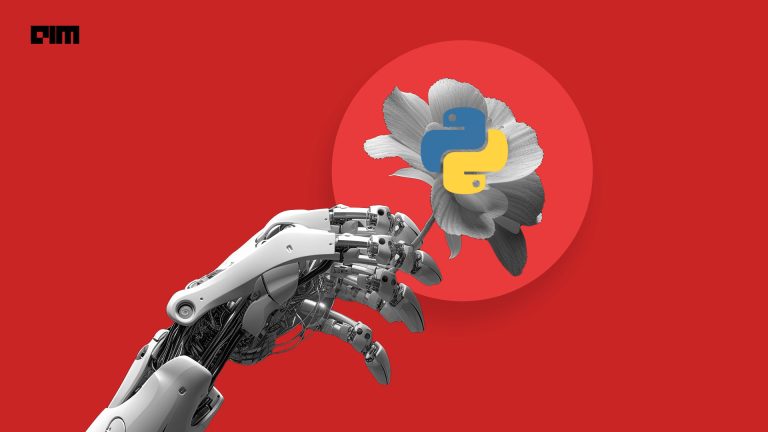|
Listen to this story
|
Tensor2Tensor (T2T) is one of the libraries of Tensorflow consisting of various deep learning models and datasets. It aims to accelerate deep learning research and make deep learning models and data more accessible. Tensor2Tensor aims to train deep learning models to be trained and executed on various platforms with minimal hardware specifications and configuration. In this article, let us focus on the Tensor2Tensor library and understand the major benefits of using this framework in various use cases and applications.
Table of Contents
- Introduction to Tensor2Tensor
- Necessity of Tensor2Tensor
- Features of Tensor2Tensor
- Use cases of Tensor2Tensor
- Summary
Introduction to Tensor2Tensor
Tensor2Tensor, in short, is known as T2T, and this library is mainly used to increase the usage and availability of deep learning models across various platforms irrespective of device constraints and specifications. The Tensor2Tensor library has various inbuilt datasets and deep learning models that can be used for various tasks like image classification, image generation, sentiment analysis, speech recognition, and also for complex tasks like language translation.
Are you looking for a complete repository of Python libraries used in data science, check out here.
So, in a nutshell, the Tensor2Tensor is a single shot library with various inbuilt datasets and models that can be used for various tasks. The Tensor2Tensor library provides us with the flexibility to add required data and models into their library as they encourage more addition and also bug fixes if any are recognized. So now, let us look into some of the standard functionalities provided by the Tensor2Tensor library.
There are four functionalities that are mainly supported by the Tensor2Tensor library. Let us have an overview of each of the functionalities.
Problems
The problem functionality of the Tensor2Tensor library basically consists of various features, inputs, and targets to be obtained from the models. The data features are stored in a standard directory named TFRecord, and within the library, it is made available in a standard python(py) file named “all_problems.py”.
Models
The models functionality is one of the vital functionalities of the Tensor2Tensor library as it is used for computations. Some default transformations are applied to the input and the output features so that the models and the data do not face platform-based dependency issues, and the users can use the pretrained models and data flawlessly.
Hyperparameter Set
The hyperparameter sets functionality is responsible for storing some of the hyperparameters of various models and data for each problem readily available in the library. So this set of hyperparameters is made available in the library within a python (py) file named “common_hparams.py”.
Trainer
The trainer is one of the functionalities of the Tensor2Tensor library that is mainly used for utilizing the models and evaluating the models present within the library. With this functionality, the users are provided with the flexibility to switch between the models, data, and hyperparameters available in the respective python files.
Adding custom components
As mentioned earlier, the library facilitates adding required data and models as per requirement. So this functionality serves as the mechanism which facilitates the data and model addition as per the requirements of the Tensor2Tensor library.
The Tensor2Tensor library also provides 5 key components that specify the training process in the library. So let us now look into those 5 key components.
i) Dataset is the component of the Tensor2Tensor library which is encapsulated by the Problems functionality. This component encapsulated by the problem will be responsible for pipelines for training and evaluation and also responsible for downloading data suitable for the library.
ii) Device Configuration is the component responsible for ensuring that the library is supported on various device configurations and specifications like CPU, GPU, TPU, and the devices with support for parallel training.
iii) Hyperparameters is the component that is responsible for initiating the pretrained models available in the library and used to train the model with the required set of parameters.
iv) Model is the component that gets activated according to the hyperparameters, and this component is responsible for transforming the data, computation, and evaluation of various metrics from the models loaded.
v) Estimator and Experiment is the component responsible for monitoring the logging parameters, running the training process across various platforms, and also carrying out various experiments on the metrics produced.
Necessity of Tensor2Tensor
The main necessity and use case of the Tensor2Tensor library is to make deep learning and various complex models easily accessible and producible irrespective of device specifications and limitations. The Tensor2Tensor facilitates the storage of various types of data like images, audio, text, and many more in a single library and trains various models with different levels of complexity and architecture in a single framework. The models and the data are made available in the form of pretrained data and models, and the parameters of the models can be made available by the researchers to implement and use for complex tasks.
Language translation, speech recognition, and image generation are some of the data and models that are made available in the library and maintained as open source so that the researchers and users can use them for their purpose. The main aim of the Tensor2Tensor library was to make deep learning models accessible and to accelerate the training of the models irrespective of the hardware specifications, which led to the development of this library. Now let us try to understand some of the features of the Tensor2Tensor library.
Features of Tensor2Tensor
The dynamic ability of the Tensor2Tensor library has facilitated the library to provide certain standard features of operation which accounts for its usage. Let us look into some of the features that the Tensor2Tensor library has to offer.
- Many complex models are made available in a simple, easy-to-use format, and if required, additional models can be added to the library that can be used in the future.
- Various forms of datasets like text, image, and audio are available that can be used either to generate data or to use for various tasks.
- Models and the datasets can be made available, and the model’s hyperparameters can be transformed according to requirements and trained suitably irrespective of the platform constraints and hardware specifications.
- Special support for accelerator support devices such as GPU and devices with parallel processing capabilities where complex models tend to converge faster.
- The pretrained models and data can be pushed into cloud-based platforms like Google Cloud ML and platforms with the support of TPUs, and the models can be trained and evaluated completely on the cloud platform itself.
Use cases of Tensor2Tensor
The Tensor2Tensor library has various data types and uses cases that can be used easily for complex tasks and modelling. So let us look into some of the standard functionalities and use cases of the Tensor2Tensor library.
Mathematical Language understanding
For mathematical language, understanding respect to mathematical attributes to perform various mathematical operations is made easy by the Tensor2Tensor library. So for mathematical model understanding, the library provides us with a readily available dataset known as the MLU dataset under the problems functionality. For this problem statement, there are 3 types of transformers that are pretrained for mathematical language understanding, which uses different sets of transformers and hyperparameters for the respective models.
Question Answering
The Tensor2Tensor library consists of a pretrained dataset known as the “BABI” dataset, where the data characteristics are similar to question answering from a story. There are various sets of question answering sets and subsets in the data, and this can be used accordingly for developing and evaluating the Question Answering models.
Image Classification
The Tensor2Tensor library consists of various datasets suitable for image classification, such as ImageNet, CIFAR, and MNIST. So the datasets can be made available using appropriate problem constraints and used accordingly to accelerate and increase the availability of image classification models and tasks.
For ImageNet data, some of the transfer learning models like ResNet and Xception are trained and made available in the form of a model, and the parameters of the model can be used accordingly with the appropriate set of parameters to instantiate the model training on the platform.
For CIFAR and MNIST, a pre-trained regularisation technique named shake-shake regularization is being used to improve image classification. So the data can be made available, and the suitable parameters have to be declared accordingly to extract the data and the model trained accordingly for image classification.
Image Generation
The Tensor2Tensor library has various standard datasets for image generation, such as CeleBA, CIFAR10, MS-COCO, and many more, which can be used extensively for image generation with the required set of parameters and constraints. So the deep learning model, which is made available in the library, can be pulled into the working environment and used for image generation tasks accordingly.
Language Modeling
The Tensor2Tensor library can be used for easy language modelling and translation. Various language data and language models are made available in the form of problems (data) and models, and this can be suitably pulled into the working environment and used accordingly for language modelling and language translation tasks.
Sentiment Analysis
For sentiment analysis, the Tensor2Tensor library consists of the IMDB data for recognizing the sentiment of a sentence, and the library provides a trained model to perform sentiment analysis on a text sentence. So the model and the parameters for sentiment analysis from the library have to be pulled into the working environment, and the readily available trained model can be used accordingly to perform sentiment analysis.
Speech Recognition
The Tensor2Tensor library can be used for speech recognition as the library has two inbuilt datasets for speech recognition. They are basically Speech to text data where the speech is generally in the English language. The datasets available in the library are Librispeech, and Mozilla Common Voice, where the data has to be pulled into the working environment according to the standard problem constraint, and the models trained respectively on each of the data have to be pulled in a similar manner into the working environment with an appropriate model trained with respect to the data.
Summary
The Tensor2Tensor library aims to provide a single shot framework to facilitate ease of use of complex data and models across various platforms and hardware specifications. The library is well built with various data types and models to simplify complex tasks. So complex deep learning models can be made available irrespective of hardware specifications, and the models can be trained accordingly on any platform by using the Tensor2Tensor library without any issues of dependencies and flaws. The library basically aims to speed up the deep learning training process and make complex deep learning models easily available and accessible.



















































































